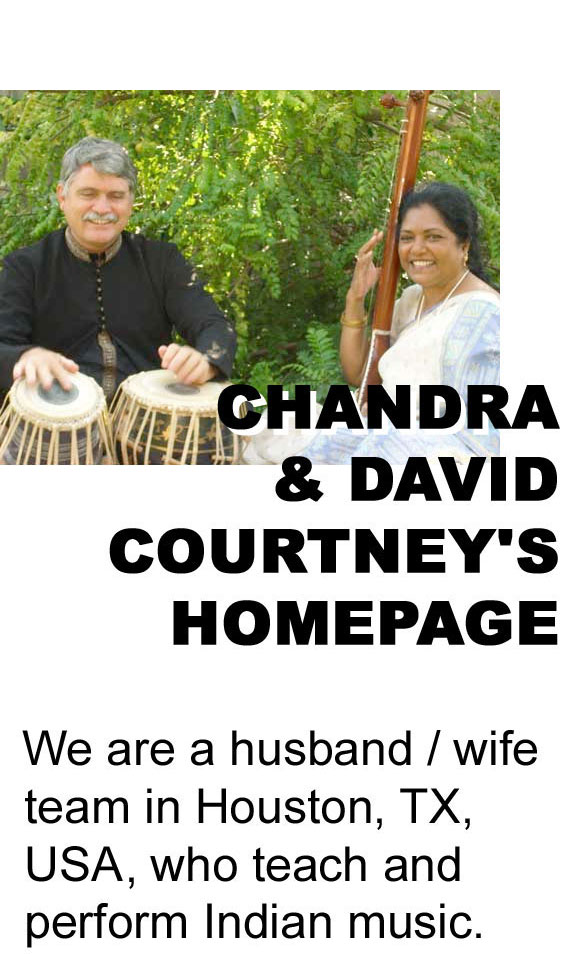HISTORICAL DEVELOPMENT OF NORTH INDIAN MUSIC
There are many important events in the history of Indian music. These milestones show clearly the development of musical thought from early history to the present day.
The early history of Indian music may be explained by the Indo-European theory. According to this theory, there was a culture, or group of cultures who were so successful that they spread throughout Europe and parts of Asia. Although no one knows where they came from, present thought tends to place their origins somewhere in Eurasia, either north of the Black sea or north of the Caspian (Mallory 1989). Within this family there are several major groups. Indo-Aryan is a group which has special significance for India because this is the language and culture which generated the Vedas and other classical texts of ancient India. The classical music of India is said to have its roots in this culture.
The connection between Indo-European expansion and Indian music may be seen in mythology. Mythology refers to music being brought to the people of India from a place of celestial beings. This mythical land (Gandharva Desh) is usually equated with heaven. However, some are of the opinion that this mythical land could actually be Kandahar in what is the modern Afghanistan. Therefore, the myths of music being given to the world by the celestial beings (gandharva) may actually represent a cultural connection with this ancient Indo-Aryan homeland.
Further evidence may be seen in musical structure. In the first few centuries B.C., Indian music was based upon seven modes (scales). It is probably no coincidence that Greek music was also based upon seven modes. Furthermore, the Indian scales follow the same process of modulation (murchana) that was found in ancient Greek music. Since Greece is also Indo-European, this is another piece of evidence for the Indo-European connection.
The link to Sanskrit is another strong indication of Indo-European roots. Many of the earliest texts were written in Sanskrit. It is also generally believed that classical music is derived from the Samaveda. However it should be stressed that this belief is hard to justify because intermediate forms have never been found.
In the final analysis, the roots of classical music being Indo-European / Indo-Aryan are a reflection of modern paradigms concerning ancient Indian history. Although supporting evidence may be slim, conflicting evidence is conspicuous by its absence. Until we are faced with significant conflicting evidence we should accept the Indo-European /Indo-Aryan theory.
The nature of music in prehistoric India may be obscure but the picture begins to become clear in the first few centuries B.C.. Bharata's Natya-Shastra (circa 200 B.C.), provides a detailed account of stagecraft in that period. Here we find mention of seven shuddha jati (pure modes) and eleven mixed jatis (modal forms not produced by simple modulation). There is also a very detailed discussion of the musical instruments.
The first millennium provides us with several texts which show the evolution of Indian music. The Brihaddeshi written by Matanga (circa 700 A.D.) is very important. It is in this work that we first find the word "rag" mentioned. However, there is some doubt whether the concept was the same as it is today. Another important text is the "Sangeet Ratnakar" by Sharangdev. This work, written around the thirteenth century, gives extensive commentaries about numerous musical styles that existed at that time.
Perhaps one of the most significant milestones in the development of Indian music was the life of Amir Khusru (Bhatkhande 1934)(born circa 1253, died 1325). There is a tendency among Indians to attribute the development of almost everything to him. He is erroneously referred to as the inventor of the sitar and tabla and numerous musical forms which did not develop until many centuries after his death. Although the extent of his contribution to Indian music is more legendary than factual, he nevertheless symbolises a crucial turning point in the development of Indian music. Amir Khusru is an icon representing a growing Persian influence on the music. This influence was felt to a greater extent in the North than in the South. The consequence of this differing degree of influence ultimately resulted in the bifurcation of Indian music into two distinct systems; the Hindustani sangeet of the North and the Carnatic sangeet of the South.
 |
| Tansen |
The musical career of Tansen is another landmark in the development of Indian Music (Mital 1960). He is significant because he symbolises the maturing of the north Indian system as a distinct entity from south Indian music.
The eighteenth century marks the birth of many of the musical forms that we think of today. Dadra, kheyal, thumri and a host of other forms are traceable to this period. Sadarang, and Adarang are two men who have made particular contributions in this matter.
The early part of the 20th century brings the most recent revolution in north Indian music. This is provide by two people: V. N. Bhatkhande and V. D. Paluskar. These two men revolutionised the concept of Indian music. Paluskar is responsible for the introduction of the first music colleges while Bhatkhande is responsible for the introduction of an organised system which reflects current performance practice. Both men are also responsible for the development and popularisation of a modern musical notation.
In the preceding section we have given a fair description of the Indian concept of Sangeet. This threefold art-form of vocal music, instrumental music and dance, provides the foundation for the classical arts in India. As in any art, the ultimate goal is the emotional quality. The primary musical vehicle for the conveyance of this emotion is rag.
Selected Video
© 1998 - 2020 David and Chandrakantha Courtney
For comments, corrections, and suggestions, kindly contact David Courtney at [email protected]
